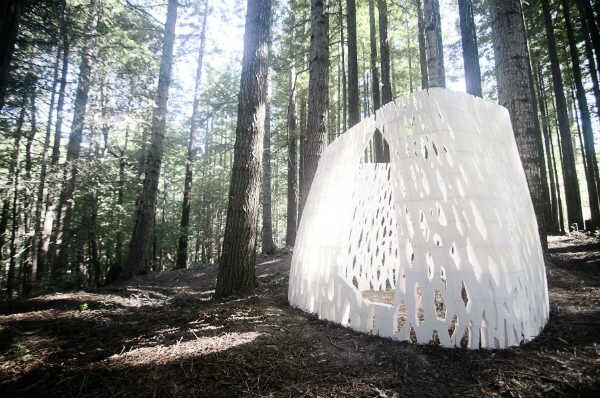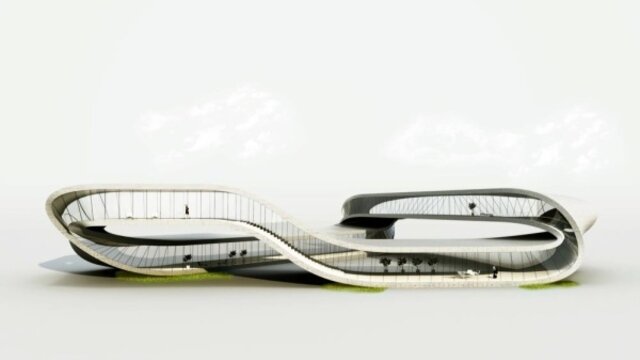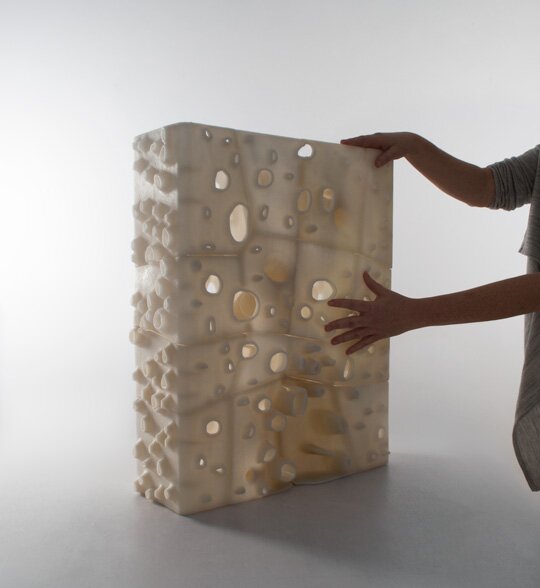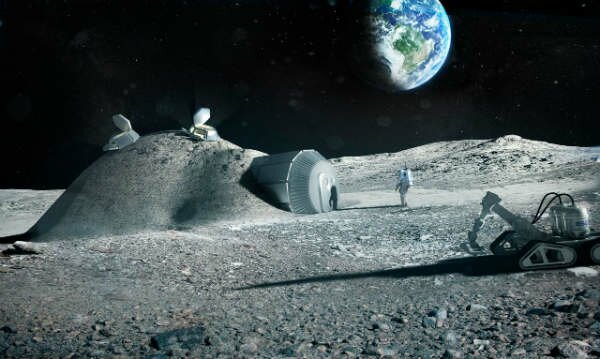One of my favorite things about 3D printing is its ability to scale; engineers are printing at the nanoscale and architects are printing pavilions. Over the next decade, there will be many 3D printed buildings. If you don’t believe me, then this article is for you. Regular readers will be familiar with some of the house-printing technologies presented here, but I wanted to bring them all together and provide updates where applicable. But have you heard of the:
Echoviren Pavilion
Smith | Allen Studio is the collaboration between an architect and a sculptor. Bryan Allen has a Masters in Architecture from University of California at Berkeley and Stephanie Smith has degrees in Art Practice Psychology from the same school. Their installation is located deep in a redwood forest in Gualala, CA. Echoviren “merges architecture, art and technology to explore the dialectic between man, machine and nature.” Printed on several Type A Machines, over 500 biodegradable pieces were combined to form the 10’ x 10’ x 8’ pavilion. It’s expected to decompose over 50 years. Though a contrasting white, its presence still seems to fit. The design is natural, bark-like, and invites the forest floor to grow upon in. If you find it, please be so kind as to send me the GPS coordinates.
D-Shape
If you know of any of these brilliant minds it’s probably Enrico “The Man Who Prints Houses” Dini. His D-Shape binds layers of sand into sturdy structures as large as six meters in every direction. It’s one of the busiest large-format 3D printers, winning contracts to repair New York’s damaged waterfronts and build the…
Landscape House
Janjaap Ruijssenaars, architect and founder of Universe Architecture, designed the Landscape House, a mobius strip building with only one side. It’s a continuous loop of construction that creates an open and spacious feeling. There are technically no walls, only floor that becomes ceiling and roof. It’s scheduled to be printed by the D-Shape in 2014. But will it be finished before the…
ProtoHouse
Softkill Design demonstrated a 1:33 scale of ProtoHouse 1.0 in 2012. ProtoHouse 2.0 will be a full scale structure that can supposedly be printed in three weeks and assembled in a single day. It’s based on the fibrous nature of bone, aiming to maximize material/strength ratios. I think these procedural systems will be very popular in the future of construction. And then there’s the more conventional…
Contour Crafting
Contour Crafting was developed by Dr. Behrokh Khoshnevis of the University of Southern California; it uses a more familiar technology that extrudes cement into desired shapes, just on a larger scale than the 3D printers that most are used to. The system has a modern construction design, factoring in the human labor into the semiautonomous process. Another method that will print building blocks for a house is the…
KamerMaker
DUS Architects, in collaboration with Ultimaker Ltd, Fablab Protospace, and Open Coop, built the KamerMaker (RoomBuilder) to advance mobile manufacturing of livable structures. It’s entirely open source so that others can build it where needed. Currently the KamerMaker is printing the components to build a canal house by 2014. If you only want to add on to your existing home, you may want to look into…
Emerging Objects
Two of the founders of Emerging Objects are architects, so while most of the company’s initial R&D has been performed through sculpture, their technology will scale up to handle building-sized creations. They specialize in using renewable and local materials like salt, wood, and cement. Maybe you’d be more interested in a lunar unit with…
Foster and Partners
Through a consortium arranged by the European Space Agency, Foster and Partners is using the D-Shape to print bases on the moon with regolith (moon dust). A 1.5 tonne mockup has been created, but the end goal will accommodate four people. Lunar getaways will be a thing in a couple decades.
There are others that have researched building print, like those behind FabClay, but what I want to see more developed is printing glass structures from glass with concentrated sun rays. All of these companies are looking to 3D printing for construction purposes because it’s highly efficient. Control over shape allows form to follow function all the more closely. These technologies will give us more functional, sturdy, and attractive houses that require less material and time to build. I’m all for that.






